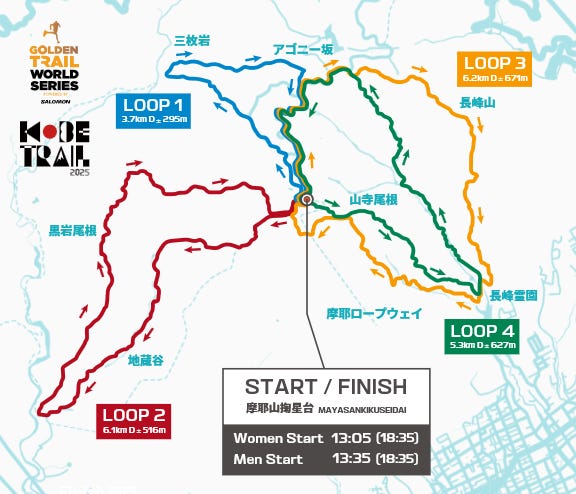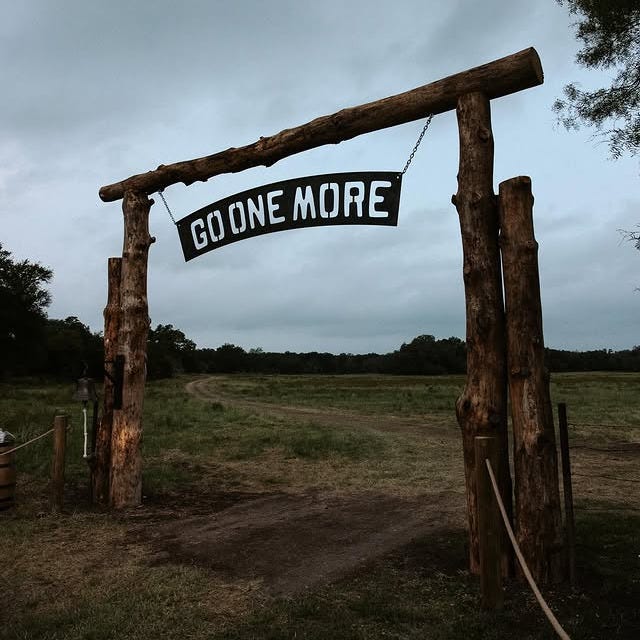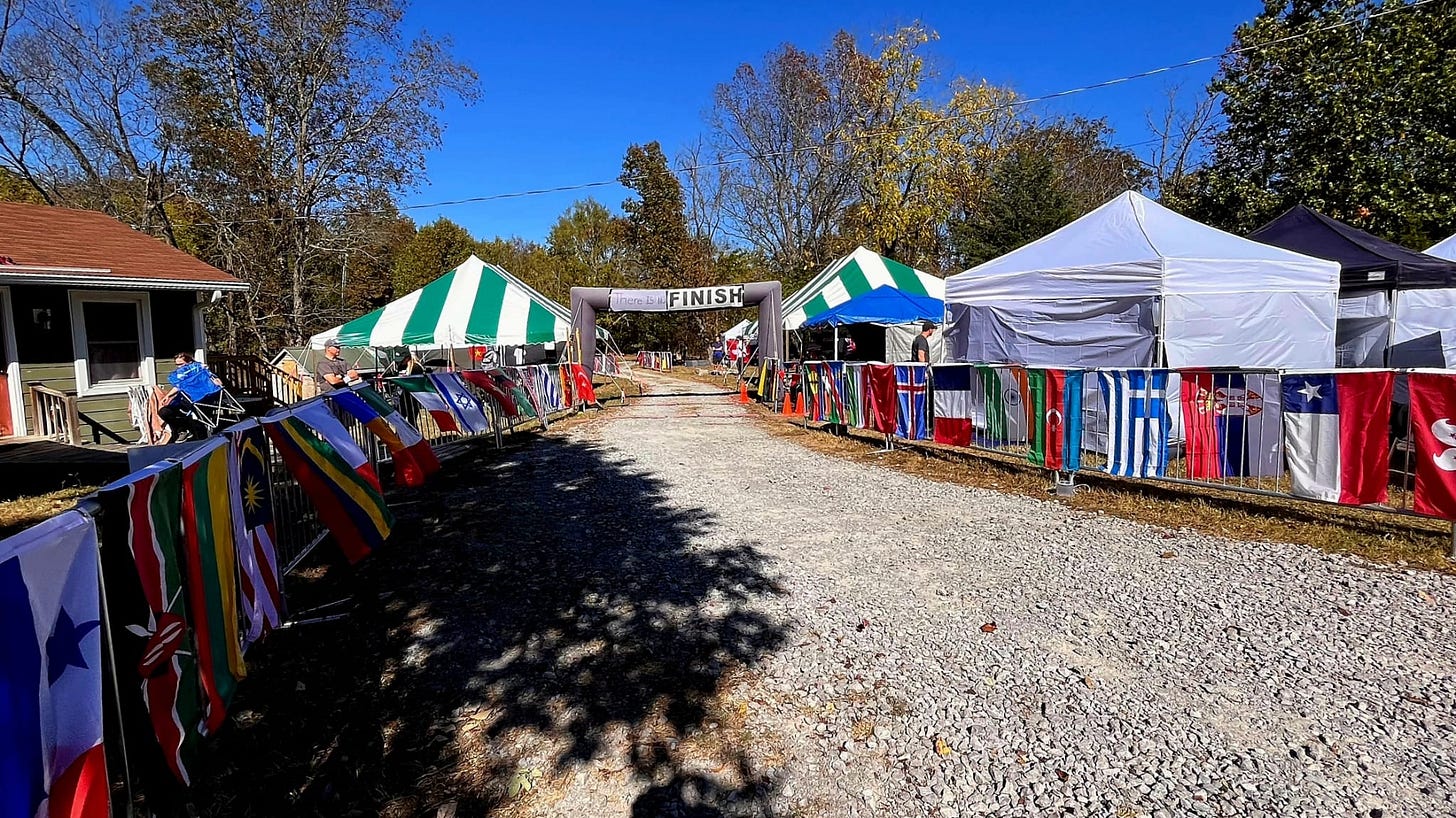Is the Future of Backyard Ultras Niche or Global?
Trail running is on the cusp of becoming mainstream. Will the Backyard Ultra follow suit or fade away?
The early months of 2025 have brought some interesting developments to the world of trail running broadcasts. First, UTMB announced an extended agreement with DAZN and other broadcast partners to increase the number of races receiving global coverage from 8 to 12. This shows an increased willingness and interest in bringing trail running to the masses.
Not long after, the Golden Trail World Series (GTWS) announced that they have teamed up with Warner Brothers Discovery (WBD) who will produce, promote and distribute broadcasts of the GTWS races globally through linear and streaming channels.
However, as reported by Matt Walsh from Tailmix, the ‘behind the scenes’ is probably even more exciting.
In the former case, the streaming costs are being funded through non-endemic sponsors such as local tourism boards, who see trail running as a powerful way to promote their regions to the masses. This influx of external investment hints at a significant shift, suggesting that trail running might just be on the cusp of something much bigger.
On a similar note, the GTWS are WBD are also looking to make trail running mainstream since they are looking to promote trail running as an Olympic sport ahead of the 2032 Olympics.
However, while the established giants of the sport are making their play for the mainstream, a different, phenomenon is quietly growing within the trail and ultra running niche: the Backyard Ultra.

Growing From The Ground Up
While big money and Olympic dreams are entering the traditional trail running scene, an interesting counterpoint exists in the form of the Backyard Ultra. This unique event format, devoid of a predetermined finish line, thrives in a niche of its own within the ultra running world. It speaks directly to humans’ urge to explore their absolute limits, pushing beyond the constraints of distance and time.
Born from a humble "friends and family" event in 2011, the Backyard Ultra has experienced remarkable organic growth. Today, around 500 such events take place annually across the globe, with an impressive 61 nations represented at the individual world championships. These numbers are even more striking when you consider the format's almost complete lack of traditional marketing and the small, dedicated team behind its rise, spearheaded by the enigmatic Lazarus Lake.
Only recently has the team decided to invest time into regularly producing “official” content through the creation of the Backyard Weekly, a weekly podcast providing updates about Backyard events happening all over the world along with short talks with some of the. Nonetheless, the long-standing absence of official media has allowed dedicated fans to fill in the gap through the creation of an interview-based podcast podcast and book, allowing the audience to more regularly interact with the Backyard Ultra world.
The Enigmatic Founder
In a sport increasingly dominated by sponsored athletes and carefully curated online personas, the figure of Lazarus Lake stands out. This self-described "old hill billy who lives in the woods" commands a significant amount of attention within the ultra running community, often becoming a central figure in the narrative surrounding his events despite his apparent aversion to media.
Lazarus Lake is known for his genuine emotional investment in athletic achievement, particularly those born from immense dedication and perseverance. This passion fuels his mission to create platforms, his races, where athletes can discover their true limits, stripped bare of excessive marketing or superficial hype. His most famous creation, the Barkley Marathons, exemplifies this philosophy.
Despite having no official online presence, it has captivated athletes and media alike, even inspiring a Netflix documentary, a feat unmatched by any other ultrarunning event. Despite this growing recognition, Laz remains fiercely protective of the "purity" of his events, maintaining their unique formats and the mystique that surrounds them.

A Backyard Too Small
It is precisely this admirable dedication to maintaining the raw and authentic spirit of the event that might inadvertently become a limiting factor in the Backyard Ultra's future growth. Lazarus Lake's backyard in Tennessee, the very site of the inaugural event in 2011, is still the venue for the most important Backyard Ultra event - the bi-yearly individual world championship.
However, this iconic venue has a finite capacity, accommodating a maximum of 75 runners and 75 crew members. The upcoming 2025 championships will see 61 national champions invited to this event, a significant increase from the 37 nations represented in 2023. This upward trend suggests that by the next championship in 2027, the number of national champions is likely to grow beyond the available space.
As a past participant, I can attest to the charm of this seemingly ordinary backyard serving as the stage for extraordinary feats of endurance. However, I also very much appreciated the diversity and global representation at the event, since countries such as Taiwan, Kenya, Bolivia, Guatemala and Bermuda will all be represented at the 2025 edition.
The inherent conflict lies in the fact that the decision around the 2027 individual championships will likely either sacrifice the setting or the international participation – a difficult choice for Laz and the Backyard Ultra community.
Growing the Backyard Ultra
Despite the inherent appeal and organic growth of the Backyard Ultra format, the limitations of its current structure, particularly the capacity of the world championships, suggest that further expansion might require support. The fundamental draw of the Backyard Ultra – the relentless pursuit of individual limits and the captivating spectacle of human endurance – resonates deeply. The popularity of professional sports underscores our fascination with witnessing such endeavors. Therefore, I believe that to truly unlock the potential of the Backyard Ultra format, a dedicated strategic partner is essential.
Lazarus Lake and his small team have done a remarkable job in nurturing the event to a point where Backyard Ultras are held in over 60 countries. However, this still feels like just the tip of the iceberg. A strategic partner could provide the necessary resources and expertise to focus on:
Global Expansion: Supporting the establishment and growth of Backyard Ultra events in both new and existing territories.
Enhanced Media Presence: Collaborating with existing media outlets to broaden awareness while keeping the community informed about Backyard Ultra happenings worldwide.
Elevated Live Stream Experience: Investing in higher-quality and more engaging live streams of the world championship events to reach a wider audience.
Sustainable World Championship Growth: Exploring solutions for expanding the individual world championship while respecting the spirit and potentially even utilizing the original route in some capacity.
It's crucial to emphasize that this isn't a call for a commercial takeover in the vein of some major endurance sports brands. Instead, the focus should be on finding a partner who understands the unique values of the Backyard Ultra community.
For brands seeking genuine connection, the Backyard Ultra community offers a unique opportunity to cultivate profound loyalty. By deeply supporting the growth of this passionate subculture, the partner becomes integral to the runners' journey. This authentic involvement fosters strong reciprocity and lasting brand affinity, going beyond fleeting mainstream sponsorships.
While immediate mass exposure isn't the primary return, the long-term dividends are significant. Backyard Ultra runners value perseverance and community. A brand genuinely supporting these values through the Backyard Ultra ecosystem earns deep resonance, fostering a powerful, almost tribal loyalty. This creates lasting brand advocates, offering a sustainable and impactful return on investment far beyond superficial marketing
Case Study 1: Go One More Last Man Standing Ultra Marathon
Nick Bare, founder and face of Bare Performance Nutrition, is a fitness influencer with 1.4M subscribers on YouTube and 420k followers on Instagram. Nick and his team undeniably understand social media and how to make things go viral.
In May 2025, Nick and his team organised the Go One More Last Man Standing Ultra Marathon. While Nick's primary audience typically leans towards strength and fitness enthusiasts rather than endurance runners, the coverage from this event managed to extend far beyond the usual endurance bubbles. Individual Instagram posts racked up tens of thousands of interactions, and total views likely reached into the millions. This widespread engagement was amplified by content from other influencers reacting to the event, especially on platforms like TikTok, where one particular video garnered over 4 million views.
It's interesting to note the media coverage this event received. While it was picked up by outlets like brobible and Canadian Trail Running Magazine, it was notably absent from more established ultrarunning media such as iRunFar and Ultrarunning Magazine. Another curious detail was the consistent use of "last man standing" in all marketing, rather than "Backyard Ultra." This choice was likely a strategic one, opting for a term more universally understood by the broader public rather than one which the ultrarunning community relate to.
This wasn't Nick's first foray into organizing events, but the "Go One More Last Man Standing" event appears to have generated an unprecedented level of public interaction and engagement. This case study, at least in part, validates the idea that the Backyard Ultra format has the potential to captivate a diverse audience - from seasoned endurance athletes to casual observers. It offers an accessible window into human limits, pushing perceptions of what's possible. However, the example also clearly illustrates that a compelling event concept isn't enough on its own; to truly expand its reach, it needs to be coupled with a robust media and distribution strategy that can elevate the product beyond a core, dedicated following.
Matt Walsh from Trailmix has already stated that Backyard Ultras can become "the new Hyrox," a sentiment I would agree with provided the Backyard Ultra World Championship secures a partner who truly understands the power of media and social content creation.

Case Study 2: Cocodona 250
I recently heard a fascinating discussion on Singletrack's commentary about the Cocodona 250, highlighting how such a lengthy event inherently lends itself to powerful social media engagement and sustained fan interest, and I felt like a lot of what they said also applies to Backyard Ultras.
One of their most prominent observations was that the continuous live stream and constant flow of social content allow viewers to remain tuned in for days on end. The curiosity and mystique of an event requiring runners to be awake and moving for what feels like an unimaginable duration creates a compelling pull that many find hard to resist. Viewers aren't just watching a race; they're witnessing an unfolding story.
Furthermore, the long duration allows for deeper connections to form between viewers and athletes. In a shorter events like a two hour marathon or a football game, it's challenging for audiences to truly learn about the protagonists and develop a long-term interest. However, in an event lasting multiple days, with moments of intense action interspersed with slower periods, there's ample opportunity for interviews, background stories, and commentary which has the ability to deepen the connection, increasing a runner's "star power" and fostering long-term fandom. As a testament to this, Cocodona 250 winner Dan Green has more than doubled his Instagram following, a boost for his personal profile and a clear benefit for his sponsors.
I believe that the Backyard Ultra possesses these same compelling components with an added layer of built-in drama. Every single hour brings the tension of whether runners will continue or drop out. This format also offers a consistent, raw, behind-the-scenes look at the runner's relationship with their crew. If the main criticism of these long races is that there is little going on, the Backyard Ultra format solves this through its hourly cadence, pulling people back in consistently to see the carnage unfold. Additionally, the simplicity of the course and format makes it a perfect canvas for continuous content creation, allowing people to remain connected even through short-form content.
However, a key difference between the Cocodona 250 and the Backyard Ultra's current setup lies in their backing. Cocodona is supported by Mountain Outpost, an organization with a clear understanding of social media and content creation. If the Backyard Ultra can find a strategic partner with similar media and content expertise, I'm convinced the format has the potential to become a staple not just within the trail and ultra scene, but also across the wider fitness audience.

Olympic Yards?
In the introduction, I mentioned the GTWS/WBD partnership's ambition to see trail running included in the 2032 Olympics. While I can appreciate the arguments for a GTWS-style race, with its emphasis on speed, technical terrain, and scenic environments, I believe the Backyard Ultra presents an equally compelling, and perhaps even more universally captivating, case for Olympic inclusion.
As has been highlighted throughout this piece, the Backyard Ultra is a pure test of human endurance and mental fortitude pushing athletes to their absolute limits. This raw display of perseverance is precisely the kind of spectacle that resonates deeply within the Olympic spirit.
Furthermore, the unique always-on nature of the event offers a distinct advantage for global viewership. For several days, regardless of their time zone, audiences around the world would have a reason to tune in, even if only intermittently, to follow the unfolding drama. The anticipation and excitement that builds as the field dwindles to a handful of competitors is a narrative arc unlike anything offered by any other Olympic discipline.
Although this is probably a stretch, I really do believe that the Backyard Ultra could inject a fresh and compelling event into the Olympic program.
The Next 10 Yards
The beauty of the Backyard Ultra lies in its unpredictable nature, much like the question of its future. Will the allure of the last man standing captivate a global audience, or will it remain tucked away within the niche of dedicated ultra runners? The decisions made in the coming years, particularly regarding the world championship and potential partnerships, will ultimately determine the trajectory of this fascinating format.
I, for one, am eager to see what unfolds on the endless course ahead.



